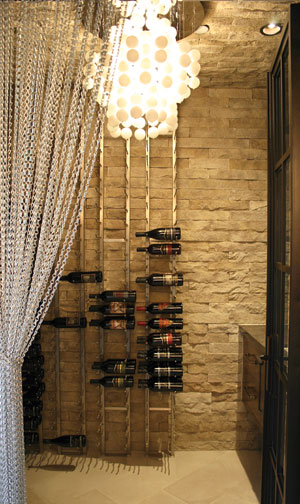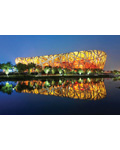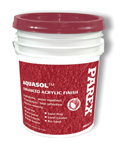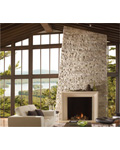Manufactured Techniques for Architectural Colors and Textures
Institutional Idiom
In other situations, such as institutional interiors and façades, the need for decorative and durable wall finishes drives the specification. One trend has been the increased use of specialty acrylic finishes that allow a broad range of color, texture and design options that can be used both indoors and outdoors. These high-performance plasters can be spray- or trowel-applied as textured wall finishes or Venetian plasters to cost-effectively achieved a level-5 finish system.
According to the Association of Wall and Ceiling Industries International (AWCI), a Level 5 finish is recommended “for areas where severe lighting conditions exist and areas that are to receive gloss, semi-gloss, enamel or non-textured flat paints.” The finish requires tape embedded in two coats of joint compound for all interior angles and joints, three coats over fasteners and accessories, and a drywall primer. On top of that, a thin skim coat of joint compound or a similar, purpose-made material, is applied across the entire surface to hide imperfections and create a flat, smooth surface.
 |
The wine cellars at the House of Rock in Santa Monica, California, have a natural yet still contemporary and modern feel, with a stacked-stone motif in manufactured, adhered masonry panels. Photo courtesy of Eldorado Stone |
For the University of Southern California's School of Cinematic Arts, the architects Urban Design Group incorporated a level 5 finish Venetian plaster into a LEED Silver, high-performance solution for film and media education. While this is a high-tech facility, its Mediterranean profiles, Spanish clay tile roofs and ornamental plasters are in keeping with the USC campus aesthetic.
A number of architectural techniques were employed to adapt the building's looks to a more efficient construction process and the region's high-seismic design requirements. Rather than casting concrete to produce the 14-inch-thick, soundproof exterior walls, the general contractor recommended using spray-applied concrete. Over the Shotcrete, the plasters were hand-troweled to provide the classic finish expected for the exterior in shades of terra cotta, off-white and muted goldenrod. Custom accent stones were cast in precast concrete by a supplier, and attached with epoxy and steel pins.
Custom trowels were also made for the occasion, to create the desired plaster textures or to accommodate the intricate building wall shapes. Urban Design Group specified an abuse-resistant acrylic plaster for the exterior, with a primary finish used on walls and an upper-level tile pattern alongside a contrasting color for an ersatz colored grout. (Faux tiles were better than real ceramic, primarily for seismic reasons.) Last, a “color-wash” material was applied to both the main walls and the tile band to create an aged and mottled look.
Two Paths Forward
For building façades as for interior walls, color and texture preferences for the architectural universe tend to follow material trends and technical needs—not the momentary whims of fashion or consumer goods. Yet, increasingly architects are responsive to the styles of the times, creating a tension between material choices and their suitability for an architectural application.
Perhaps that fact confirms the prediction by Koolhaas that color could stage a comeback as something that “genuinely alters” how people perceive the work of architecture, the façade, the environment.
The three types of industrial surface technologies explored here—manufactured stone, high-pressure laminate, and the family of EIFS, stucco, and plaster—have developed a solid reputation for not only delivering unique color and texture options that alter our perception of space and form, but do so with valuable physical properties that add to a building's long-term performance.
Architects may not change their preferences for color or texture due to the offerings from the supply side, but they can take advantage of more kinds of technologies for a given solution than ever before.
As Koolhaas offered, some colors are integral properties of the material, while others are artificial and change the appearance of the material. As we embark on the 21st century, we have both kinds of products at our disposal as we create new buildings.
C.C. Sullivan is a writer and communications consultant specializing in architecture and building products.
| ENDNOTE | |
| 1 | Composite Panel Association |

|
Notice

www.laminart.com

www.parex.com

www.eldoradostone.com








